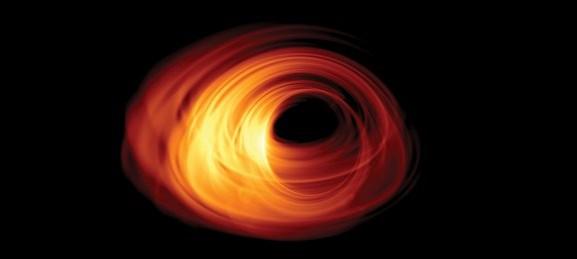
For the first time ever, astronomers are hoping to take an image of a sumermassive black hole using the Event Horizon Telescope (EHT). And this is not just any black hole...this is Sagittarius A*, the behemoth in a feeding frenzy at the centre of our very own galaxy, the Milky Way.
Also Read: Mysterious rock recovered from infamous Roswell crash site!
The EHT is a global virtual telescope – a worldwide network of telescopes linked together to form a telescope disk almost as enormous as the Earth itself. The telescope is the product of a global collaboration between 13 institutes, representing 10 different nations.
The project is led by scientists from the Radboud University Nijmegen, Netherlands. The first observation run by EHT commenced on April 5, 2017 and will end on April 14, 2017. The telescope hopes to capture the first photograph of a blackhole's event horizon. Thus far, all images of black holes have been based on computer simulations.
Heino Falcke, a Radboud astronomer came up with the idea of this pioneering experiment 20 years ago. He is currently the chairman of the Scientific council of EHT. He received an ERC grant for his "BlackHoleCam" along with Michael Kramer from Max Planck Institute for Radio Astronomy, and Luciano Rezzolla from the University of Frankfurt.
Various other astronomers from the university will man radio telescopes across the globe from Hawaii and Mexico, to Chile and the US, as the first surveillance is carried out by EHT.
"It is the challenge of doing something that has never been attempted before. It is the start of an adventurous journey towards a black hole," Falcke said in a statement.
"If everything works as expected and the weather is fair on all telescope locations we might have a chance to get a first glimpse of the event horizon. However, I think we need more observation campaigns and eventually more telescopes in the network to make a really good image," he added.
The results of this first attempt to capture an image of a black hole will only be made available after 2018. The reason behind this is that the hard disk which will receieve the recordings from the South Pole Telescope can only be collected in October of 2017 at the earliest due to weather constraints.





!['Lip lock, pressure, pyaar': Vidya Balan- Pratik Gandhi shine in non-judgmental infidelity romcom Do Aur Do Pyaar [ Review]](https://data1.ibtimes.co.in/en/full/797104/lip-lock-pressure-pyaar-vidya-balan-pratik-gandhi-shine-non-judgmental-infidelity-romcom.jpg?w=220&h=138)








